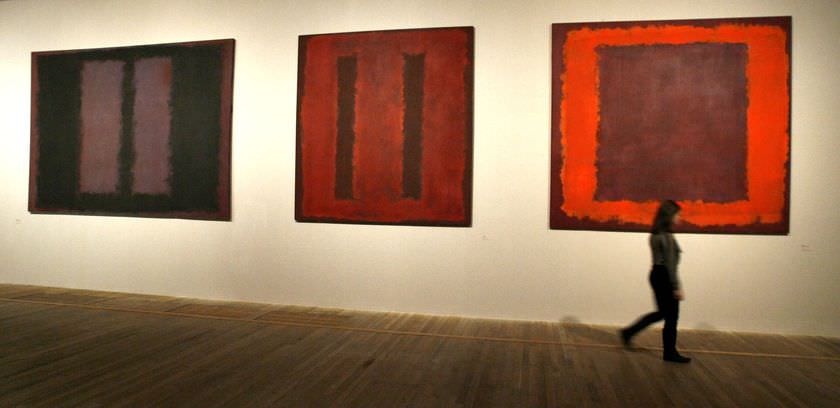The Mystery Behind Rothko’s Seagram Murals

Mark Rothko’s Seagram Murals have become some of the most famous and recognisable pieces of modern art in the last century. They permeate popular culture (one hangs in Bert Cooper’s office in Mad Men), and are spread throughout the world, hanging in London, Washington and Tokyo. They are also some of the most divisive works of art – many adore them and are moved by them, whereas others only see blocks of colours.
What is most attractive about the Seagram Murals, famously described as “apocalyptic wallpaper”, is the mystery behind it. One of the most profitable art commissions at the time, in 1958 Mark Rothko was hired to paint something dramatic and original in the fashionable abstract expressionist style to mark the opening of the grand Four Seasons restaurant. Serving seasonal food to the rich and powerful, The Four Seasons was going to be the place to see and be seen in Manhattan, and was the jewel in the crown of the brand new Seagram building. It seemed like the perfect opportunity for Rothko to make his mark on one of the newest parts of the New York skyline. However, Rothko suddenly and violently renounced his contract in 1959 and refused to give the paintings to the restaurant, losing him a significant amount of money and exposure.
Originally commissioned as seven pieces (amounting to 600 square foot) to decorate the restaurant, Rothko’s murals eventually numbered 30, and the artist became completely absorbed in the commission. He requested that the murals be hung high to give an imposing look, but also because they were also painted while in that position, and be presented on a warm background colour.
But why did he withdraw the paintings? This question has been a source of much debate in the art world. The answer only comes from second hand quotes from Rothko, such as a memory of Rothko’s studio assistant. After a night eating at the newly opened Four Seasons, he told his assistant “"Anybody who will eat that kind of food for those kind of prices will never look at a painting of mine.”
The art collection hanging in the restaurant was already impressive – Picasso, Miro and Pollock all hung in the newly opened Four Seasons, but they were still waiting for the piece de resistance from Rothko – and they would wait forever.
In the late 1960s, a decade after his withdrawal from his Seagram contract, Rothko began to give his murals a home. He gave 9 of his murals to The Tate. Norman Reid, then director of the Tate, described it as a “princely gesture”. Rothko insisted on the paintings being presented in their own, stark room, so they could not be compared to other works, by Rothko or anyone else.


